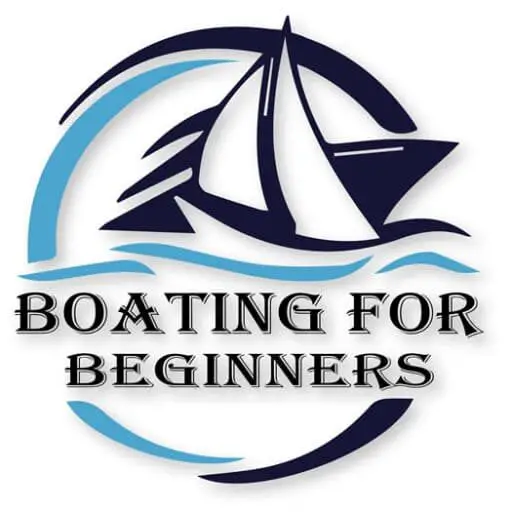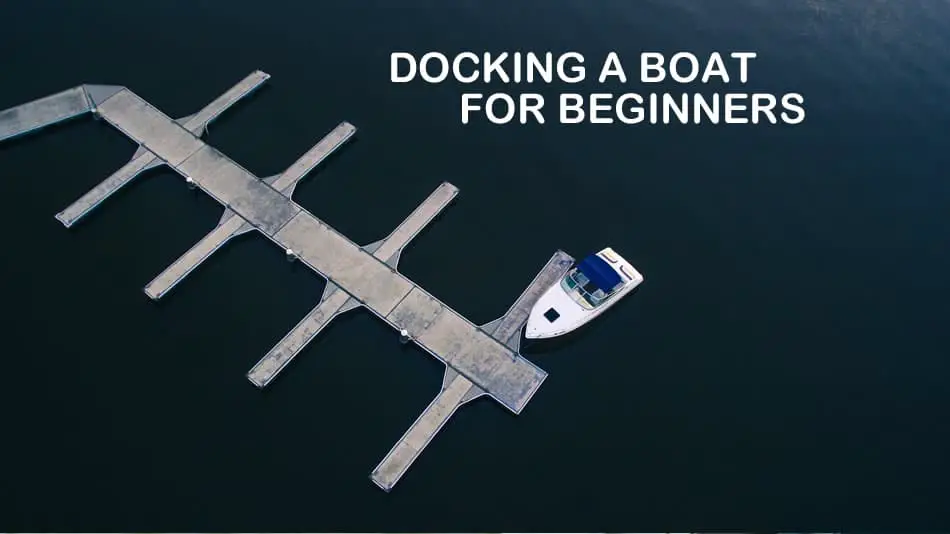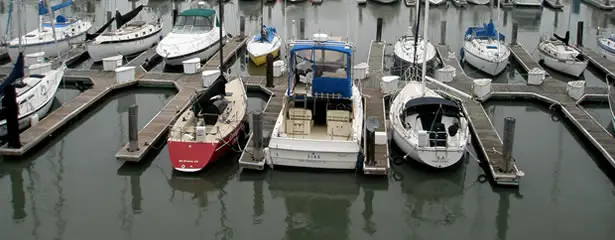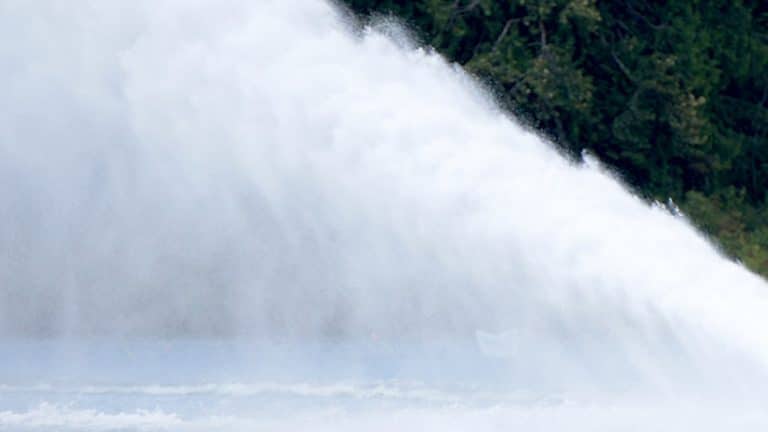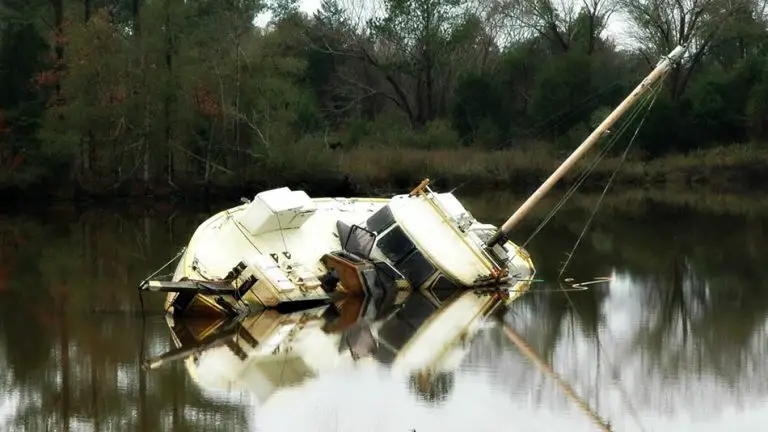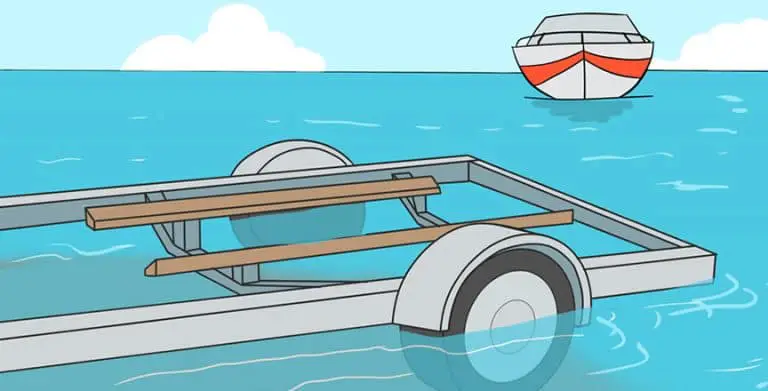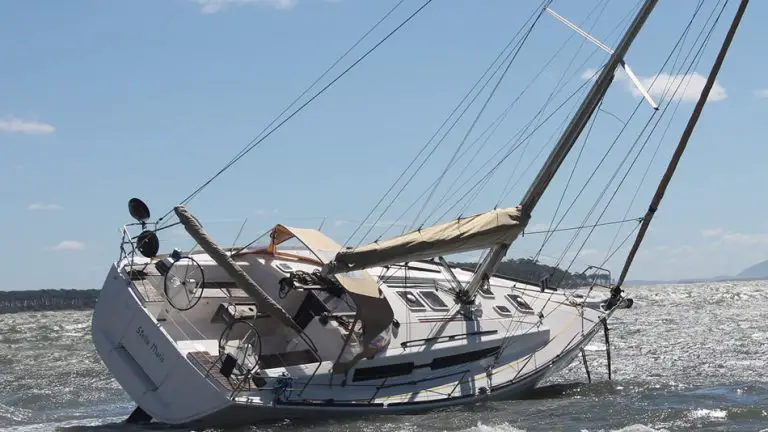Docking a Boat For Beginners and What You Should Know
Docking a boat for the first time is probably one of the more nerve-wracking experiences you will have to endure as a boater. I bet practically everyone you talk to will tell you how easy it is to dock a boat, and well, for the most part, they will be right. It really is an easy task as long as you know what you are doing.
I’ve put together a guide below in this article to help explain how to dock a boat so that when you try it for the first time it won’t feel as overwhelming.
Steps For Coming Alongside a Dock
Step 1: Line Up The Approach

Step 2: Keep It Slow
A common mistake that most new boaters make is that they come in way too fast. As you are approaching the dock, use your forward and reverse gears to help maintain the proper speed you are looking for. On a twin-engine vessel, you can switch back and forth between the engines to help you slowly come in.
Step 3: Swing Your Boat In

Step 4: Finishing Touch

Step 5: Secure Your Boat
With the boat sitting parallel to the dock, you can now turn off the engine and begin to secure it to the dock. Once the boat is secure, you can begin to let off or let on your passengers.
How To Dock a Boat With a Single Engine
Usually, docking a boat with a single engine is the easiest thing that you can do. The first thing to focus on here is to get the dock lines pre-rigged. At this time you want to have the fenders set and also hung over the side.
It’s a good idea to study the current orientation, as this might end up affecting your docking experience. Make sure that you handle the bow of the boat adequately so you can eliminate the wind force. Ideally, you want to have more control, and that means going against the wind or water currents.
If you have crew members, you want them to be at various strategic spots. These include the stern and the bow, some should even be at the dock lines if possible. Your crew should never put their feet or hands between the boat and any other item, as they can end up with some major injuries. So you need a lot of attention and focus, otherwise, you will end up with problems.
As you get closer and closer to docking a boat, you need to line it up for the approach. Slow down but maintain steerage if possible, as that will work a lot. You can also lower the canvas enclosure, sports towers or the bimini tops, as that will help you reduce the wind effect. It will also give you more control over the boat, which is what you need in a situation like this.
In case you see that the wind or currents are pushing you against the dock, you want to make the entry as shallow as possible (degrees). It’s important to increase the angle of attack when the weather is good and there are no currents. Don’t move with the wind if you want to get the utmost control, so try to keep that in mind at all costs. Slowness is key if you want to start docking a boat the right way. Make small adjustments as you get closer and closer to the dock.
A good trick that most people use is to put the engine into and out of gear. If you see any issues, abort the docking procedure and try again. The last thing you want is to deal with are any major issues.
In order to complete the process, you will have to stop the forward momentum of the boat. You can do that simply by delivering a tiny bit of power in reverse. The attempt is to stay in a line if possible. Angle the engine at the dock and then make the reverse approach if possible. Tie off and ensure that the dock lines are set, this way you can be sure that you won’t come in contact with other boats. Shut down the engine only when the boat is 100% secure. Otherwise, you will end up dealing with problems.
Secure the lines and make sure that the ropes are put in tight. Since this is a single engine boat, you don’t need to use lots of ropes, but the more you use, the more secure your boat will be. So try to keep that in mind.
How To Dock a Boat With Twin Engines
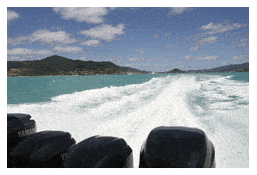
If you use this system, the boat is pivoting on the axis. You can put the port engine in reverse and the starboard engine in forwarding movement. When you do this, you will notice that the port engines pull the bow of your boat to the port and the starboard engine ends up pushing the stern to the starboard. It’s still a great system for you to try out and it can actively work well if you handle it appropriately.
Docking a boat with 2 engines is great because you also have an outboard, outdrives or twin inboards with rudders. It’s a good idea to center the steering wheel as the engines will do all the work. The inboards will pivot a boat a lot faster when compared to the outboards. If you use the outboards, you will need to add more power if you want similar results. Which is why using the inboards is a lot easier. But it’s up to you to experiment and see the right approach.
If you get close to the dock, you want to alternate the power distribution as you try to keep everything under control. The trick here is to practice this and apply power to the starboard and the port engines adequately. If you pull alongside, you want the engine that’s farther from the dock as you try to pull the stern in.
Using a single engine or both in tandem is a great idea. But it does require experimentation, mostly because stuff like this can be very difficult to manage and handle. Yet it does have the potential to work very well if you know what you are getting into with stuff like this. So yes, it doesn’t matter if you have 2 or more engines most of the time. Usually, if you have more than 2engines, you will notice that they are paired electronically on the outer engines. However, some models do allow you to configure stuff through the engine controls too. And that’s incredibly interesting and rewarding.
Docking With Thrusters
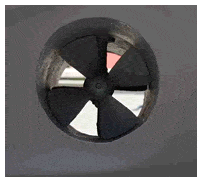
The thing to consider here is that most of the modern stern and bow thrusters have their own controllers. There are some units that have a controller in the form of a joystick. The appearance of that controller doesn’t really matter, it mostly comes down to how comfortable you are when it comes to using the controller.
Speaking of that, the controllers will use a green arrow to showcase the direction according to how you maneuver the joystick. A good idea here is to use the thrusters sparingly. You want to use them as the means to correct any possible issues if you can. That will make things a lot easier for you, otherwise, you will end up with some issues here and there. Remember, you can always add more power, but if you add too much power, you end up losing control. So it’s a game of patience and focuses more than anything else.
Then there’s the fact that some of the thrusters and more particularly the electrical ones will shut down for a bit or overheat. Which is why you need to use this in short bursts. The chances of dealing with any kind of problems with this sort of thing are pretty much minimal, so try to consider that.
In the end, it all comes down to experimenting and finding the right system and approach that works for you. Sometimes it can be a simple one, other times it can be very difficult. The idea is to study everything and then experiment to see what’s comfortable for you.
How To Dock a Boat In a Tight Slip
If you have to dock in a tight slip, this will complicate things a little bit. The idea here is that a slip is not a very open space. Docks are open on 3 sides, but the slip just has the pier, and that can make it difficult. Show your companion the mooring line and the eye of the line. You want to show the spot that will be placed over the boat’s cleat and explain how you want to pull this thing off. It might end up being a challenge, so try to consider that.
What you want to do is to lower the speed to the point where you have bare steerageway. You want to go slowly, but not too slow as that can be an issue. If you slowed down to the right speed, go to the pier at a 45-degree angle. If you are close to the pier, go into neutral. Shifting the gears and going into neutral is what you want to do if you want to handle the process correctly and potentially avoid any problems.
Now that you are moving, you want to shift the boat away from the pier, drop the eye of the line and now move around 2-3 feet from the pier as you shift the motor ahead just a tiny bit. You want to tie off the cleat to the bow of the boat. Do that and then you will be docked.
Tips To Dock a Boat Safely
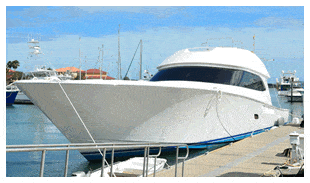
If you have twin inboards, don’t touch the wheel even if you are tempted. Lower the windage if you are dealing with winds, regardless of their intensity! It’s also a good idea to make sure that you never kill the engines until all the lines are secure. Otherwise, you can end up with problems.
That’s why it should always be ok to abort and try again. You should never rush just to try and get this right. It might work right off the bat, or you might need multiple tries to pull it off. The idea is to know what you are getting into and focus on making this a great experience. It’s all about precision more than anything else.
In the end, docking a boat is only as hard as you make it be. Yes, it won’t work right away and you might have to try it out multiple times. But this is a game of patience and precision, and as you get more experience you can get very good at it. That being said, don’t hesitate to use all the tools and features offered by your boat when it comes to docking. It will enable easier and faster dockings, plus you will avoid any potential damage to your boat as well!
“never approach a pier any faster than you’re willing to hit it”
